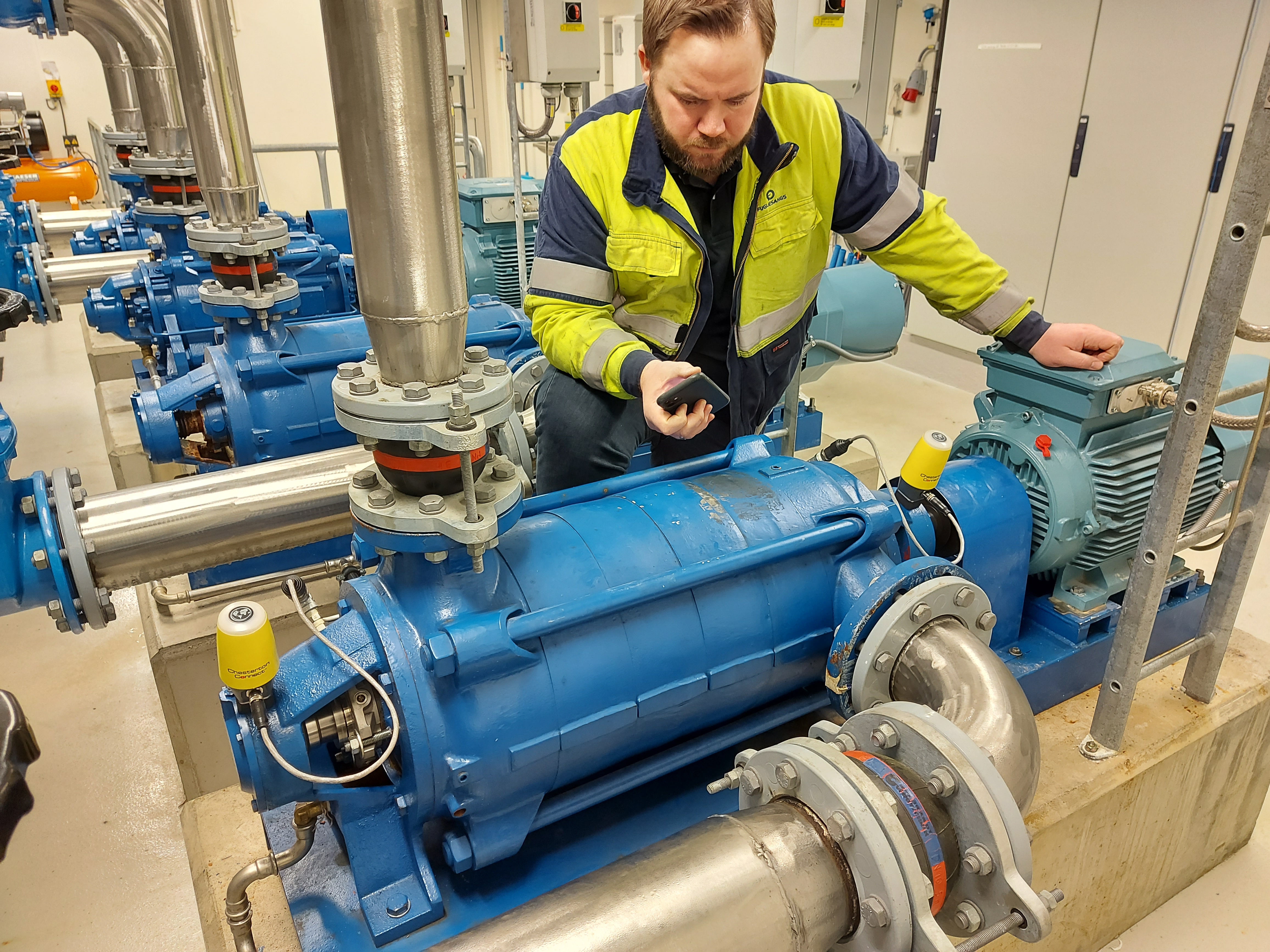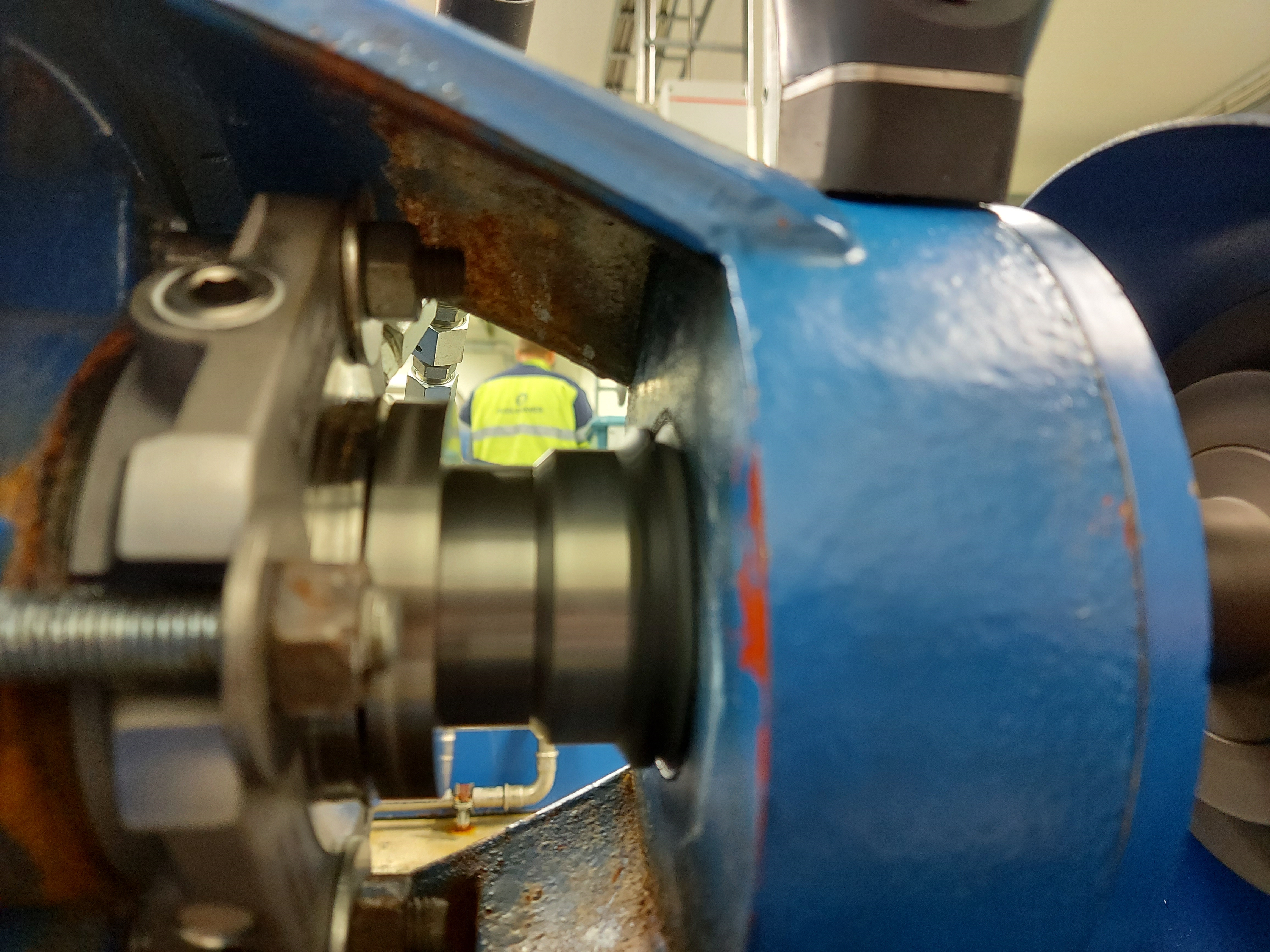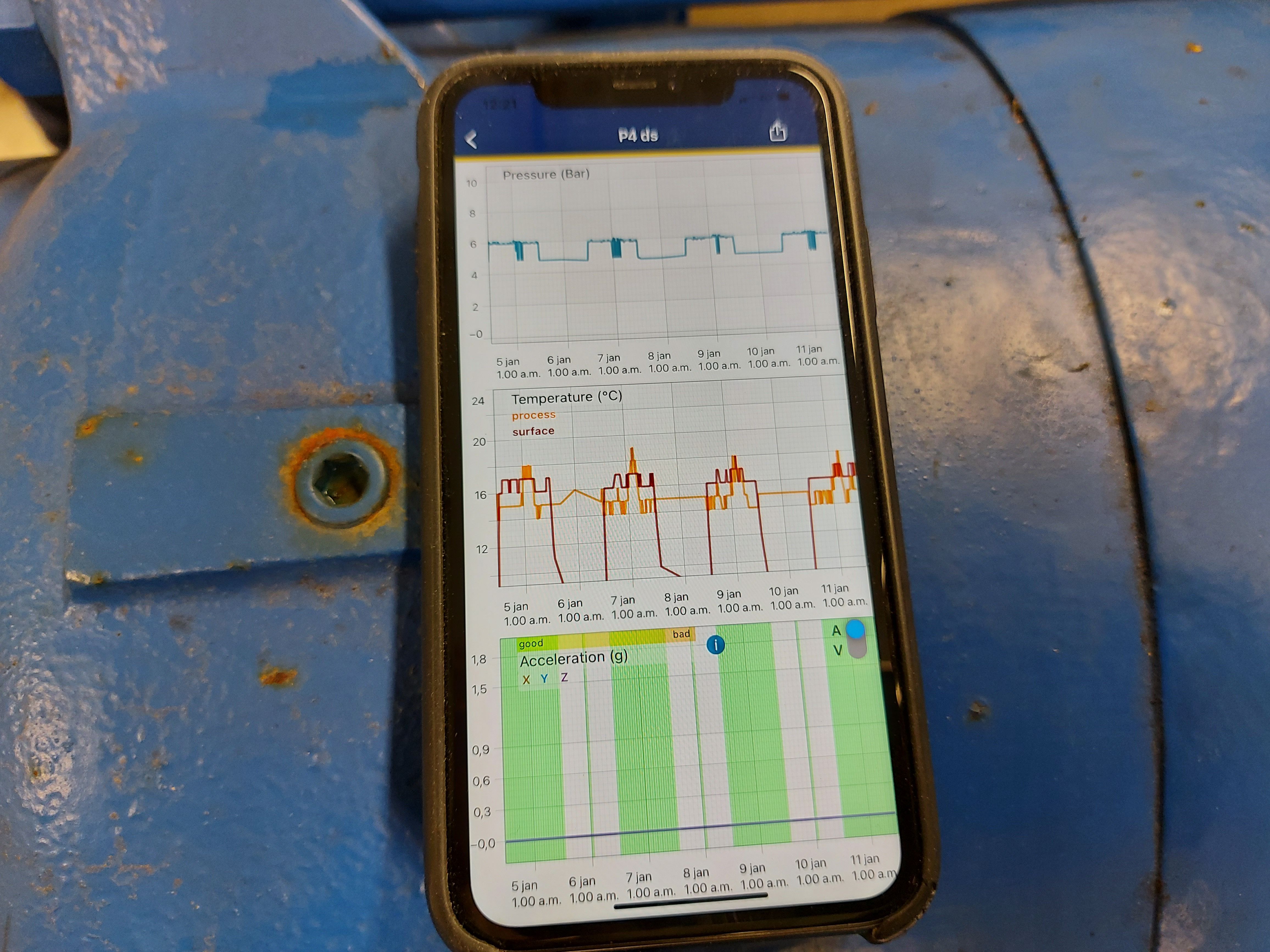There are many sources of vibration in pumps.
The most common causes include bent shafts, unbalances, misalignments, reaction forces, and contact between components. These issues can all be detrimental to the reliability and operation of rotating equipment.An increase in vibration can result in:
- Excessive shaft movement that eventually harms seals
- Permanent indentations in bearings
- Affected clearances such as in bushings and wear rings
- Looseness
- Damaged components due to fatigue
Correlating pump vibration monitoring with process pressure and temperature
When we look at a pump and the causes for pump failure, we must take a broader look at all its components. It is important to note that pump failures do not always start with changes in vibration and surface temperature. Some pumps’ upset conditions start with changes in pressure — which ultimately translate to vibration. Fluctuations in the fluid characteristics, changes in rotation speed or direction, clogs on discharge or suction, and worn internal wet side components can all cause changes in pump pressure.
Pump failure point #1: Seals
The first most common component to fail in pumps is the seal. Seal failures can be caused by multiple factors, many of which are not detected in the early stages.
Some of the most common factors are pressure changes in the suction and discharge sides of the pump which directly disturb the seal chamber (also known as stuffing box) pressure and temperature — ultimately affecting the mechanical seal.
For example: during pump operation, an increase in vibration, followed by an increase in the seal chamber process temperature and drop in pressure is most likely caused by a restriction in the suction side of a pump.

Terje Hedum, Workshop Manager at Fuglesangs AS, picture taken during pumps inspection.
In this scenario, if only bearing vibration and surface temperature are monitored, process changes inside the pump would go unnoticed. With an increase in seal chamber temperature and a drop in pressure, the sealing device (such as a single mechanical seal, or double mechanical seal with a buffer system) could experience dry-running like conditions, thus causing premature seal failure and ultimately pump failure.
For a double mechanical seal running a barrier fluid, monitoring the pressure and temperature of the barrier fluid tank and the process fluid inside the pump helps confirm the proper pressure differential, which is necessary to ensure adequate seal lubrication and operation.
Monitoring process pressure and temperature combined with vibration can provide a clear understanding of the pump’s condition, helping catch upset conditions to prevent failures and increase uptime.
Pump failure point #2: Bearings
The second most common components to fail in pumps are the bearings. Typically, bearing failures are caused by corrosion from seal leakage, equipment unbalance, shaft misalignment, damaged impeller, and others. Maintenance of bearings is normally preventive. Bearings are often replaced during seal replacements even when these are still in good condition.

Complete monitoring of pump conditions
In summary, it takes monitoring pump process pressure, temperature, and vibration to truly provide a full and accurate picture of a pump’s actual condition.
The Chesterton Connect™ sensor, mobile application, and Cloud analytics provide 24/7 visibility of an equipment’s condition in all four areas (process pressure, process temperature, vibration, and surface temperature) to allow you to identify issues early and make corrections for overall increased reliability and improved plant performance.

To discover this amazing technology, available now in Norway, click here: Chesterton Connect™
Content provided by Chesterton.